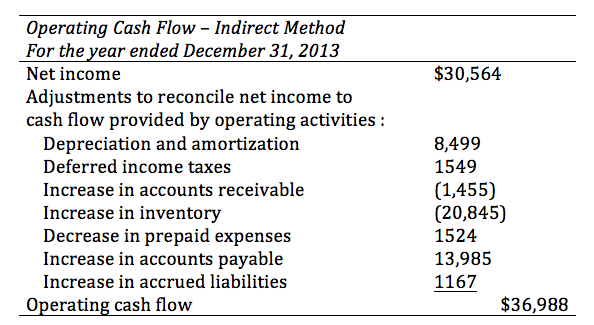Tier 2 Capital: Definition, Ratio & Calculation

You’re given capital in exchange for specific rules and promises to follow payback schedules. This means that, if a bank fails, its Tier 2 assets will absorb any losses before its creditors or depositors do. Revalued reserves is an accounting method that recalculates the current value of a holding that is higher than what it was originally recorded as, such as with real estate. Hybrid capital instruments are securities that have both equity and debt qualities, such as convertible bonds.
- These are the ones that come with strings attached and no guarantee of return.
- Under the Basel III accords, tier 3 capital is being completely abolished.
- Issuers looking to leverage the full benefits of Reg A+ opt for tier II— raising from any investor, in any location, up to the full $75 M.
- The Tier 1 Capital Ratio is calculated by taking a bank’s core capital relative to its risk-weighted assets.
While violations of the Basel Accords bring no legal ramifications, members are responsible for implementing the accords in their home countries. Tier 3 capital is tertiary capital, which many banks hold to support their market risk, commodities risk, and foreign currency risk, derived from trading activities. Tier 3 capital includes a greater variety of debt than tier 1 and tier 2 capital but is of a much lower quality than either of the two. Under the Basel III accords, tier 3 capital is being completely abolished. (3) a minimum no-call, repurchase, redemption, or revolvement period of 5 years for tier 2 capital. Subordinated debt is debt that ranks lower than ordinary depositors of the bank.
The reconciliation must include a statement that compliance with the regulatory capital requirements outlined in subpart B of this part is determined using average daily balances for the most recent 3 months. To address potential conflicts between the requirements of §§ 620.3 and 628.62(c), we proposed to revise § 620.3 to state that, unless otherwise determined by FCA, the use of the authorized limited disclosure in § 628.62(c) does not create an incomplete disclosure. We also proposed to revise § 620.3 to permit institutions to modify the required statement that the information provided is true, accurate, and complete to explain that the completeness of the disclosure was determined in consideration of § 628.62(c). In addition to minimum capital requirements, Basel II focused on regulatory supervision and market discipline. Basel II highlighted the division of eligible regulatory capital of a bank into three tiers. It includes assets such as revaluation reserves, hybrid capital instruments, and undisclosed reserves.
The Difference Between Tier 1 and Tier 2 of Regulation A+
A bank requires tier 1 capital for general growth because the more loans they give out the the larger the amount of money they have to set aside based on the risk weighted value of the loan giving. This would have been any instrument a bank issued as a loan without requiring collateral, which was lower in priority than other debts. Basel III was designed to improve the banking sector’s ability to deal with financial stress, improve risk management, and strengthen a bank’s transparency. Basel III implementation began on Jan. 1, 2013, with a 10 percentage point reduction in Tier 3 assets every year following. Defined by the Basel II Accords, to qualify as tier 3 capital, assets must have been limited to 2.5x a bank’s tier 1 capital, have been unsecured, subordinated, and have an original maturity of no less than two years. Tier 3 capital debt used to include a greater number of subordinated issues when compared with tier 2 capital.
Basel I required international banks to maintain a minimum amount (8%) of capital based on a percent of risk-weighted assets. Basel I also classified a bank’s assets into five risk categories (0%, 10%, 20%, 50%, and 100%) based on the nature of the debtor (e.g., government debt, development bank debt, private-sector debt, and more). Capital tiers for large financial institutions originated with the Basel Accords.

The acceptable amount of Tier 2 capital held by a bank is at least 2%, where the required percentage for Tier 1 capital is 6%. The Accords set the capital adequacy ratio (CAR) to define these holdings for banks. Under Basel III, a bank’s tier 1 and tier 2 assets must be at least 10.5% of its risk-weighted assets. The Basel III accord introduced a regulation that requires commercial banks to maintain a minimum capital ratio of 8%, 6% of which must be Common Equity Tier 1. The Basel III accord was introduced in 2009 as a response to the 2008 Global Financial Crisis and as part of continuous efforts to improve the banking regulatory framework.
Understanding Tier 3 Capital
A bank’s total capital is calculated as a sum of its tier 1 and tier 2 capital. Regulators use the capital ratio to determine and rank a bank’s capital adequacy. Tier 1 capital is a bank’s core capital, which it uses difference between tier 1 and tier 2 capital to function on a daily basis. Tier 2 capital is a bank’s supplementary capital, which is held in reserve. The 2008 Global Financial Crisis occurred during the period when the Basel II accord was being implemented.

These are three (Basel I, Basel II, and Basel III) agreements, which the Basel Committee on Banking Supervision (BCBS) began to roll out in 1988. In general, all of the Basel Accords provide recommendations on banking regulations concerning capital, market, and operational risks. A bank’s tier 1 capital ratio compares its core equity assets to its risk-weighted assets. A high ratio means that the bank has enough liquid assets on hand and is more likely to absorb losses without the risk of a bank failure. We disagree with the assertion that the proposal would “liberalize” the Safe Harbor. The proposed rule would change the date for determining compliance with the Safe Harbor provision in order to simplify the administration, enforcement, and monitoring of compliance with the Safe Harbor requirements.
Offering Qualification Timeline
The Tier 2 capital ratio is the formula utilized to describe the Tier 2 capital being held versus what’s known as total risk-weighted assets (RWAs). Risk-weighted assets are the assets held by the bank that are weighted by the credit risk. The formula is Tier 2 capital divided by risk-weighted assets multiplied by 100 to get the final percentage.
Puerto Rico’s Investment Edge: Public Companies Beat Indexes with … – The Weekly Journal
Puerto Rico’s Investment Edge: Public Companies Beat Indexes with ….
Posted: Mon, 07 Aug 2023 14:01:00 GMT [source]
However, this is not typically the case as the goal of most issuers is to make their raise available to as many investors as possible. Remember, the advantage of Reg A+ is that it allows you to raise and advertise to a much broader pool of investors— non-accredited and accredited. Issuers looking to leverage the full benefits of Reg A+ opt for tier II— raising from any investor, in any location, up to the full $75 M. Regulation A+ (Reg A+) is an incredibly powerful method for raising capital, however, in order to get the most out of your raise, it is crucial to select the correct tier for you. While both tiers have benefits and drawbacks, tier II generally provides the greatest flexibility and opportunity for companies looking to raise capital. The information provided on this website does not constitute legal or regulatory advice; instead, all information, content, and materials available on this site are provided for general informational purposes only.
What Was Tier 3 Capital?
It is more difficult to accurately measure due because it is composed of assets that are difficult to liquidate. Often banks will split these funds into upper- and lower-level pools depending on the characteristics of the individual asset. Common Equity Tier 1 (CET1) is a component of Tier 1 Capital, and it encompasses ordinary shares and retained earnings. The implementation of CET1 started in 2014 as part of Basel III regulations relating to cushioning a local economy from a financial crisis. As discussed in Section 2—Substantive Revisions to the Capital Rule and Section 3—Clarifying and Other Revisions to the Capital Rule, the final rule adopts the revisions we proposed with minor adjustments in response to comments received. Hybrids are instruments that have some characteristics of both debt and equity.
The EBA updates on the monitoring of Additional Tier 1, Tier 2 and … – European Banking Authority
The EBA updates on the monitoring of Additional Tier 1, Tier 2 and ….
Posted: Fri, 21 Jul 2023 07:00:00 GMT [source]
For the subordinated term debt included under Tier 2, the amount that can be counted towards capital is reduced by 20% for every year when the debt is due within 5 years. This takes care of the time to maturity problem for Tier 2 subordinated debt. Under Basel III, the minimum Common Equity Tier 1 increased to 4.5%, down from 4% in Basel II.
The Basel Accords are international banking regulations that ensure banks have enough capital on hand both to meet their obligations and absorb any unexpected losses. Tier 1 capital consists of shareholders’ equity and retained earnings, which are disclosed on their financial statements. Banks must hold certain percentages of different types of capital on hand. Having these types of liquid assets or cash on hand balances out the risk-weighted assets that banks hold. (3) Redesignating equities included in one component of regulatory capital (CET1 capital, additional tier 1 capital, or tier 2 capital) for inclusion in another component of regulatory capital. (2) For purchased stock (excluding statutory minimum borrower stock and third-party stock), the calendar quarter-ending in which the stock is acquired by the holder and recognized on the institution’s balance sheet.
Many banks held tier 3 capital to cover their market, commodities, and foreign currency risks derived from trading activities. What this really means is that banks used loans from other banks to cover any losses they took while trading on several markets. Banking regulations known as the Basel Accords require banks to have different types of capital on hand. These liquid and cash assets balance out the risk-weighted assets that banks hold. This increases banks’ stability, which increases the stability of the overall financial system.
Information on this website may not constitute the most up-to-date information; legal, regulatory or otherwise. Readers of this website should contact their attorney to obtain advice with respect to any particular legal or regulatory matter. Disclaimer – The information provided on this website does not constitute legal or regulatory advice; instead, all information, content, and materials available on this site are provided for general informational purposes only. Using a FINRA registered Broker-Dealer will allow you to raise capital in every state.
Tier 1 Capital vs. Tier 2 Capital: What’s the Difference?
Subordinate debt is any type of security interest (such as bonds or stock) that hold a lower priority interest than another security. Lastly, we proposed to remove and reserve § 628.63(b)(3), which required disclosure of the computation of regulatory capital ratios during the transition period, because the provision is no longer applicable. We received no comments on this amendment and are adopting it as proposed. The System Comment Letter requested that we reconsider our position on service corporation investments. The System further noted that all service corporations are subject to chartering requirements and that FCA can establish the individual capital requirements of a service corporation on a case-by-case basis.
With Tier 2, a US-GAAP level financial audit is required upfront which goes back up to two years. With Tier 2 offerings, issuers are typically accepting investors from all states. Tier two is a more common option and for companies whose offering will appeal to investors nationwide. Both Tier 1 and Tier 2 offerings have a maximum offering duration of 12 months.

(2) In order to recognize an exposure as an eligible margin loan for purposes of this subpart, a System institution must comply with the requirements of § 628.3(b) with respect to that exposure. The balance of comments received supported this proposed amendment, and we are adopting it as proposed. Tier 3 capital is limited to 250% of a bank’s Tier 1 capital that is required to support market risks. This ensures that the funds are sufficiently liquid and are available when the bank needs to use them.
After each successful Reg A offering, the issuer must submit for a new SEC qualification. Whereas Tier 1 Capital is commonly known as a bank’s core capital, Tier 2 Capital is known a bank’s supplementary capital. As the name insinuates, the capital that falls within this bucket is secondary to Tier 1 and is seen as being of a higher risk than its core capital partners. These are the ones that come with strings attached and no guarantee of return.
